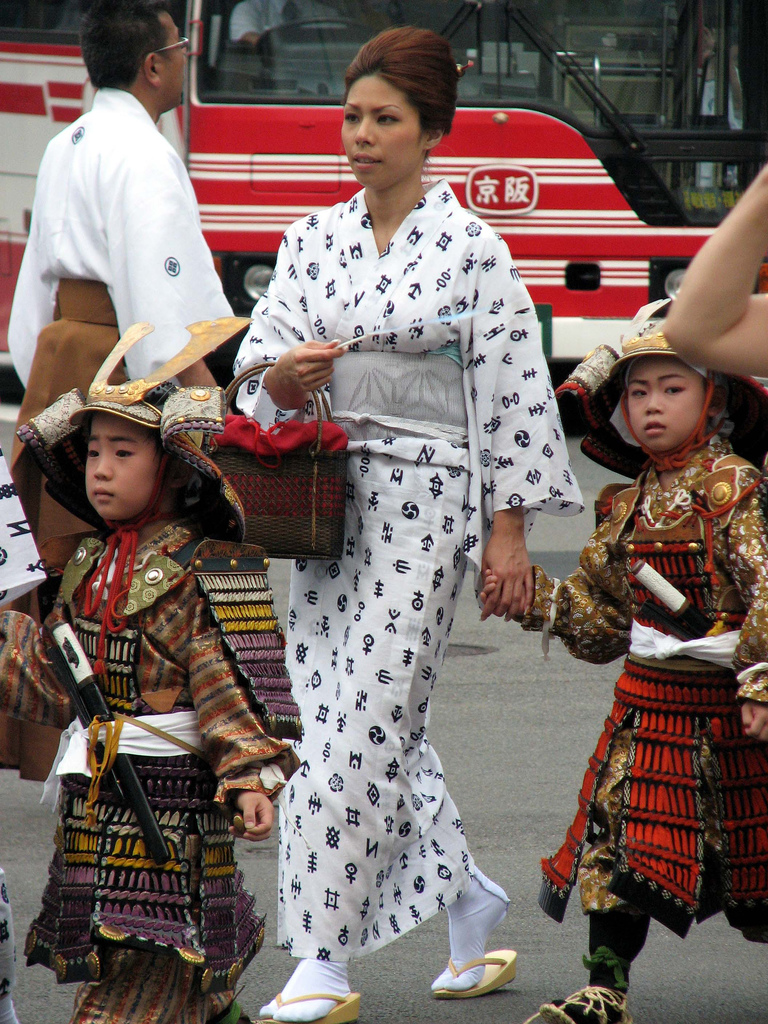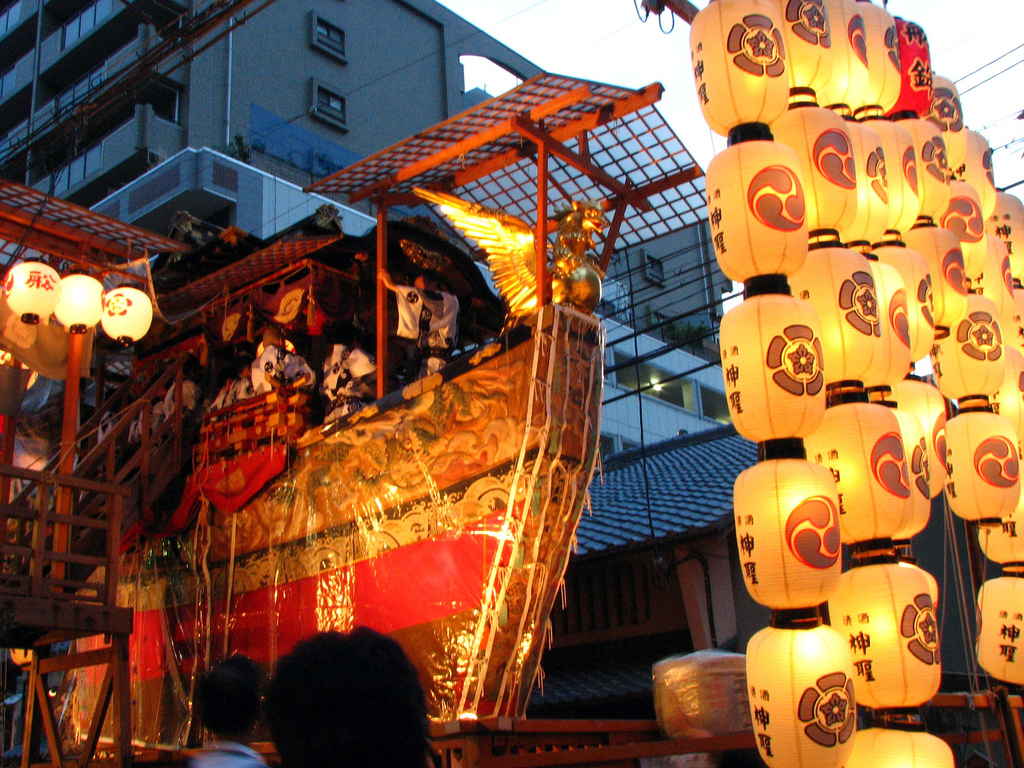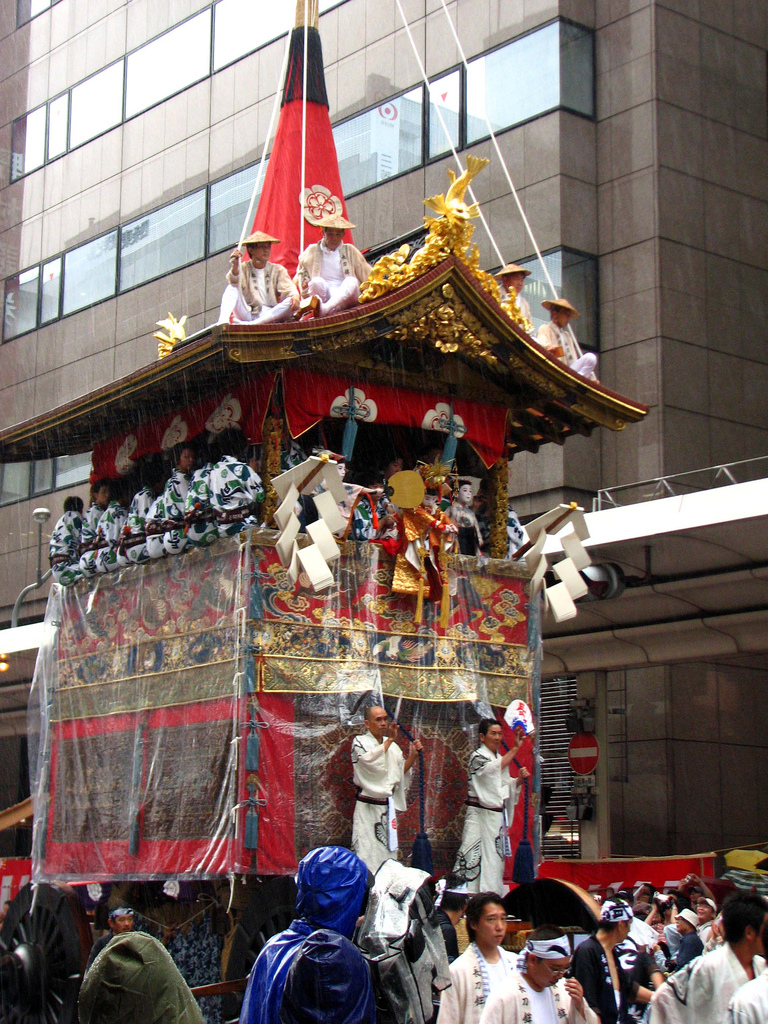
The Littlest Samurai, Gion Matsuri
In 869 a plague was killing the citizens of Kyoto, so a priest named Enjo from Yasaka Jinja led a procession through the streets of the city, welcoming the god who prevents disease. This was the beginning of the Gion Matsuri, which has become one of the three largest festivals in Japan.
There are many activities throughout the month of July, starting with a meeting of the townspeople to draw lots for the order of the 32 floats in the parade on the 17th . The floats themselves are built between the 10th and 14th using traditional methods. The huge creations are mobile works of art weighing several tons and held together with rope, no nails. Several dozen musicians or performers can sit in each one.

Fune Boko (船鉾) Gion Matsuri
The days leading up to the parade, July 14-16, are full of activities. Called Yoi-yama, the floats are on display in the streets, and stalls spring up selling all types of food and souvenirs. There are musicians and performers in traditional clothing, and the festival lasts into the night with floats lit up with paper lanterns.

Naginata Boko (長刀鉾) Gion Matsuri
During the Yoi-yama, local residents open their homes to the public and display family treasures such as folding screens, paintings, and kimono. This part of the festival is called the Byobu Matsuri.
Schedule of events
Following is a list of selected events of Gion Matsuri every year.Though Kyoto is packed with tourists during that time, the Gion Matsuri is a special event well worth attending. The website has information in both Japanese and English: http://www.gionmatsuri.jp/manu/manual.html
 photos by:
MShades &
MShades,
MShades
photos by:
MShades &
MShades,
MShades